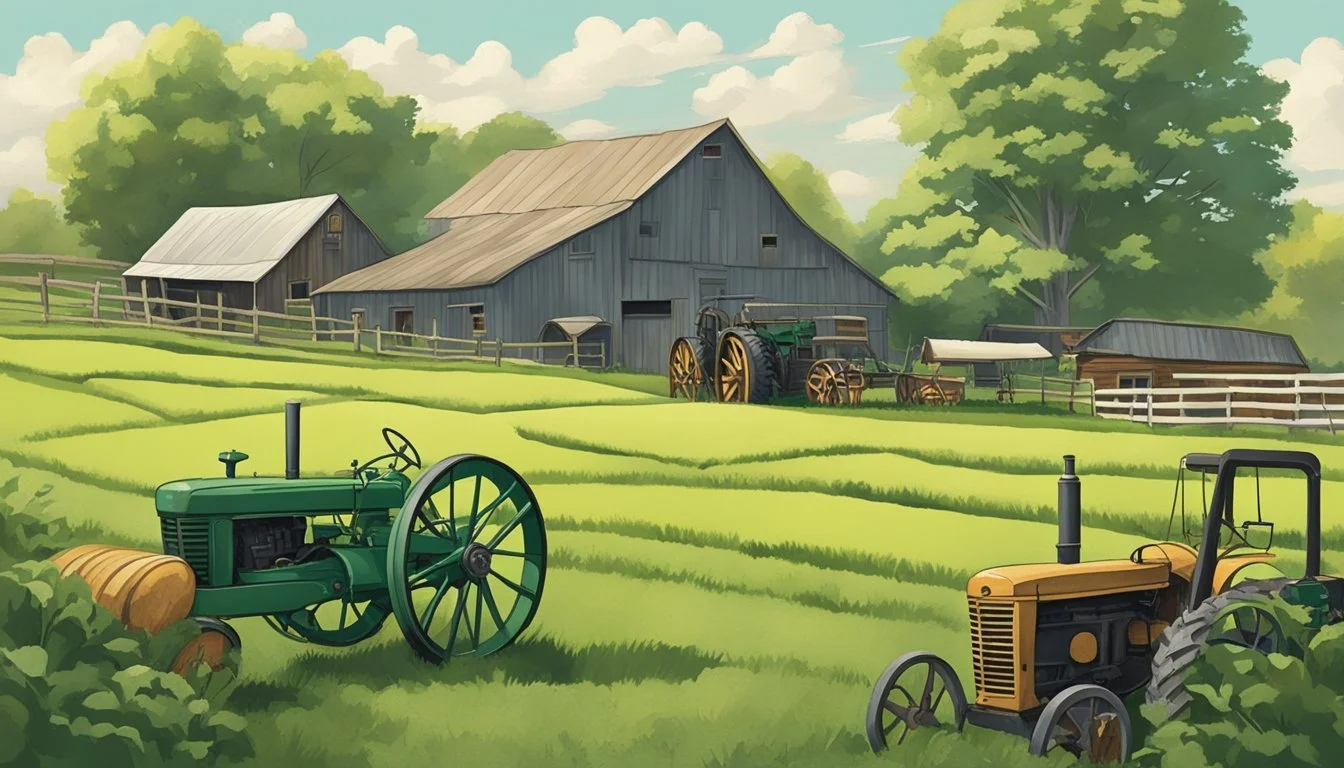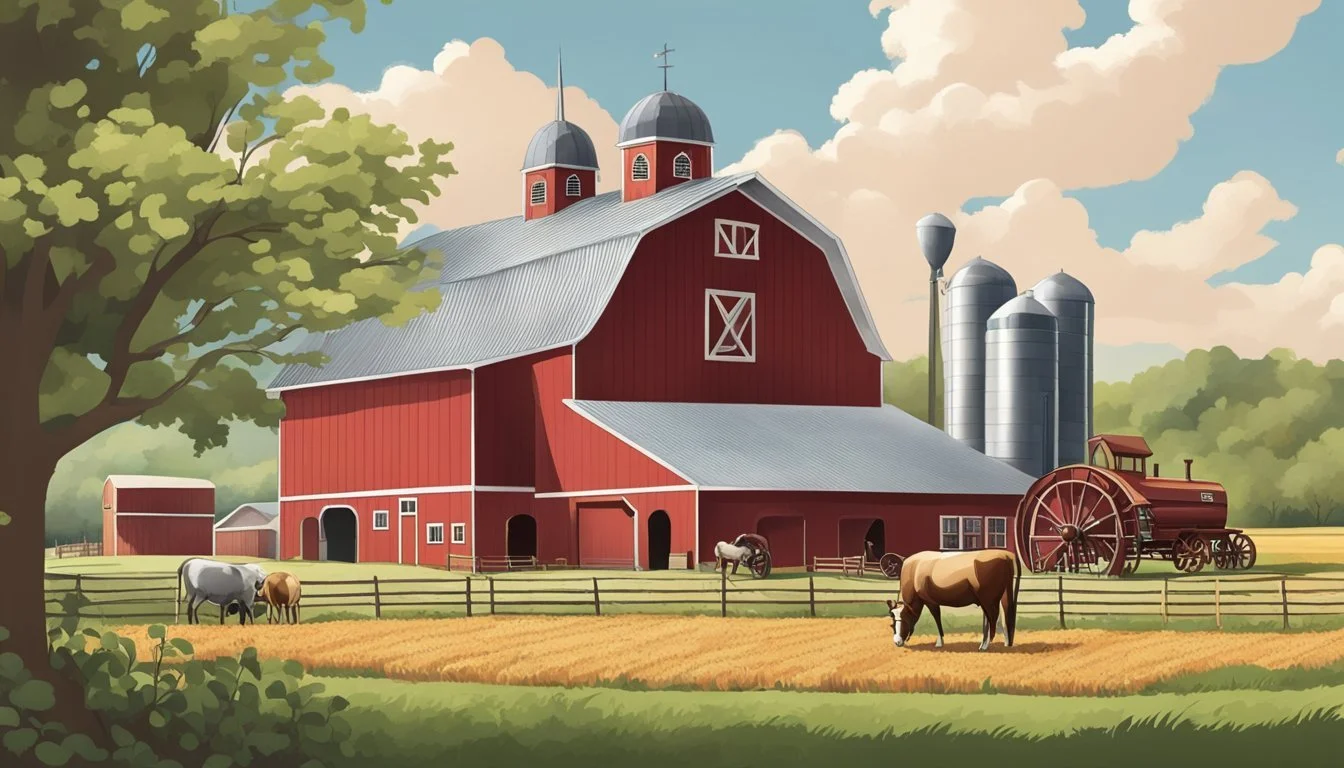Historical Farms and Agricultural Museums in Ohio
Exploring the Heartland's Heritage
Historical farms and agricultural museums offer valuable insights into the past, serving as gateways to understanding Ohio's rich agricultural heritage. These sites preserve the state's rural traditions by showcasing the evolution of farming techniques, tools, and the daily lives of those who once worked the land. The Association for Living History, Farm and Agricultural Museums supports such institutions, emphasizing their importance in education and cultural preservation.
Ohio, a state with deep agrarian roots, provides a multitude of historical venues where visitors can step back in time. Places like the scenic Johnston Farm & Indian Agency bring to life two millennia of history, from Native American mounds to the developments of the 19th century, through immersive experiences. Meanwhile, Sauder Village Living History Museum & Farm, opening again on May 1, 2024, invites guests to engage with the past, offering hands-on activities and a glimpse into historical rural life.
These sites enable an exploration of Ohio’s past, while educational programs and reenactments at these locations continue to inform and delight visitors of all ages. They play a pivotal role in preserving the past, allowing future generations to understand and appreciate the state’s agricultural legacy.
History of Ohio Farming
Ohio's farming history is rooted in the experiences of early settlers who arrived during the late 18th and early 19th centuries. These pioneers transformed the fertile lands of Ohio into a patchwork of thriving farms. The state's agricultural chronicle intertwines with the growth of the United States, providing a rich tapestry of resilience and innovation.
The Canal Era, a pivotal period in Ohio's history, saw the construction of the Miami and Erie Canal. This significant infrastructure development, completed in the 1800s, was instrumental in connecting Ohio farms to broader markets. It also marked a time when agriculture began to play a central role in Ohio's economy.
In Piqua, Ohio, one prominent figure, John Johnston, had considerable influence on local agricultural practices. This early farmer was known for his progressive techniques and commitment to improving agricultural methods. Johnston's legacy includes contributions to both soil management and livestock breeding.
Settlers in Ohio, drawn by the promise of rich land, faced the challenges of a new and rugged landscape. They adapted European farming methods to the Ohio environment, altering practices to suit the varied climate and soil conditions.
During the 1800s, Ohio became a significant hub for agriculture due to several factors:
Fertile soil and favorable geography
The advent of canals, such as the Miami and Erie Canal
Agricultural innovation led by individuals like John Johnston
These elements combined to establish Ohio as a cornerstone in America's farming history and have continued to shape the state's identity into the modern era. Today, Ohio honors this heritage through programs like the Ohio Historic Family Farms Program, celebrating farms that have served the community for over a century or more.
Iconic Historical Farms
Ohio's rich tapestry of agricultural heritage is preserved and showcased in several iconic historical farms and museums. These sites not only celebrate Ohio's farming history but also offer educational insights into the lives and histories of the people who shaped the region.
Johnston Farm & Indian Agency
The Johnston Farm & Indian Agency presents the history of early American farming and interaction with Native American history. Once the home of John Johnston, a federal Indian agent, visitors can explore the farm and its collection, which includes a restored farmhouse, American Indian mounds, and a section of the Miami and Erie Canal complete with canal boat rides.
Sauder Village
Sauder Village is a living history museum where visitors can experience firsthand the farming practices of the past. Complete with historic buildings, artifacts, and demonstrations, the village is anchored by the Great Oak tree and includes the Sauder Heritage Inn and a refreshing pool, giving guests educational and recreational options.
Adena Mansion & Gardens
Adena Mansion & Gardens Historic Site serves as a memorial to Thomas Worthington, the sixth governor of Ohio and one of the state's first United States senators. Here, history enthusiasts can visit the beautifully restored Adena Mansion and explore the gardens, which offer a glimpse into the agricultural lifestyle of the early 19th century.
Hanby House
The Hanby House, located in Westerville, was the home of Benjamin Hanby, who composed the famous song "Up on the Housetop." Visitors can view a vast collection of artifacts related to the Hanby family and learn about their impact on local history, abolitionism, and American music.
McCook House
Lastly, the McCook House, a state memorial dedicated to the "Fighting McCooks," a family of Civil War officers, offers a museum-like atmosphere where artifacts and exhibits paint a vivid picture of their contributions to agriculture and military history in Ohio.
Living History & Agricultural Museums
Ohio offers a unique window into the past with its diverse array of living history and agricultural museums. These institutions are dedicated to preserving and presenting the state's rich historical heritage, allowing visitors to step back in time and experience the lives of early settlers and farmers firsthand.
Ohio Village
Ohio Village is a recreated 19th-century community that offers insights into the lives of Ohio's settlers. It's a component of the Ohio History Connection and provides a vibrant arena for historical interpretation, featuring a collection of original and replicated buildings. Visitors to this village can immerse themselves in the past through hands-on activities, workshops, and seasonal events that showcase the everyday lives and community spirit of bygone eras.
Fort Meigs
Fort Meigs stands as a monument to Ohio's contributions to American history, particularly during the War of 1812. It's known for its large, reconstructed log fortifications and extensive historical programs. The site includes a museum that displays a variety of artifacts and offers educational resources aimed at preserving the memory of those who served at the fort. Living history events at Fort Meigs often feature reenactments and demonstrations, providing a tangible connection to the state's military past.
Schoenbrunn Village
Schoenbrunn Village, founded by Moravian missionaries and Native American converts, is a testament to Ohio's multicultural heritage. This village is home to a collection of 17 historical buildings and a museum that narrates the history of the village's settlers, their relations with Native Americans, and their peaceful coexistence. Preservation of tradition and resources is central to Schoenbrunn, where visitors can explore the earliest organized settlement in Ohio and learn about the efforts to maintain these historic sites for future generations.
Preservation of Agricultural Heritage
Agricultural heritage in Ohio is actively being preserved through organizations and partnerships focused on maintaining historic landmarks and educating the public on farming history. They serve as a testament to the region's agricultural past and a resource for current and future generations.
Association for Living History
The Association for Living History, Farm, and Agricultural Museums (ALHFAM) plays a pivotal role in preserving agricultural history. This organization provides resources for those involved in living historical farms, agricultural museums, and outdoor history venues. ALHFAM facilitates the sharing of knowledge and practical skills essential to the operation and preservation of historical facilities.
National Park Service Collaborations
Collaborations with the National Park Service ensure that Ohio's agricultural past is preserved, not just in museums and exhibits, but also through historical parks and farms that provide a more hands-on experience. These parks actively engage in the conservation of landscapes, structures, and objects that reflect the state's agrarian history.
Preservation of Artifacts & Exhibits
Maintaining and showcasing farming-related artifacts and exhibits is crucial for the education and enjoyment of visitors:
Artifacts: Tools, household items, and machinery are preserved to demonstrate the technological evolution in agriculture.
Exhibits: They offer a glimpse into the daily lives of Ohio's farming families through interactive and static displays.
These elements collectively offer insights into the agricultural practices of the past and highlight the development of farming in Ohio.
Cultural Impact on Modern Farming
Ohio's agricultural heritage has profoundly influenced modern farming practices, from the historical tools and techniques that were pioneered by early settlers, to the conservation and education initiatives led by agriculture-focused museums and historical farms.
Historical Tools and Techniques
Early farmers in Ohio from the 1800s relied on a variety of tools and techniques that are still appreciated today for their ingenuity and sustainability. Living history farms in Ohio integrate these historical methods to demonstrate the evolution of agriculture. For example, the use of a cradle scythe for harvesting has been replaced by modern machinery, yet understanding these tools provides insight into the early settlers' resourcefulness and work ethic.
Canonical Ohio Farms Today
Today, many farms in Ohio still cherish their historical roots while employing contemporary agricultural practices. These canonical Ohio farms not only serve as operational agricultural entities but also as custodians of Ohio's farming legacy. They have successfully bridged centuries of farming evolution, often preserved as part of Ohio's Historic Family Farms Program.
Educational Resources & Programs
The importance of historical farms is further accentuated through educational resources and programs that aim to convey the story of Ohio's agricultural heritage. Agricultural museums such as the Buckeye Agricultural Museum and organizations like the ALHFAM provide a range of educational materials and opportunities, including tours of a classic one-room schoolhouse, Logan house, and smokehouse. These resources help modern residents and farmers understand and appreciate the hard work and dedication of their forebears.





